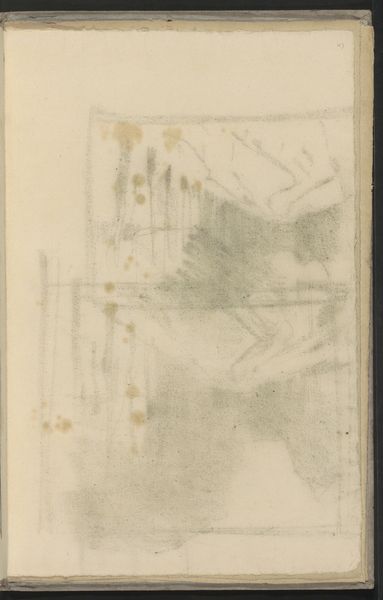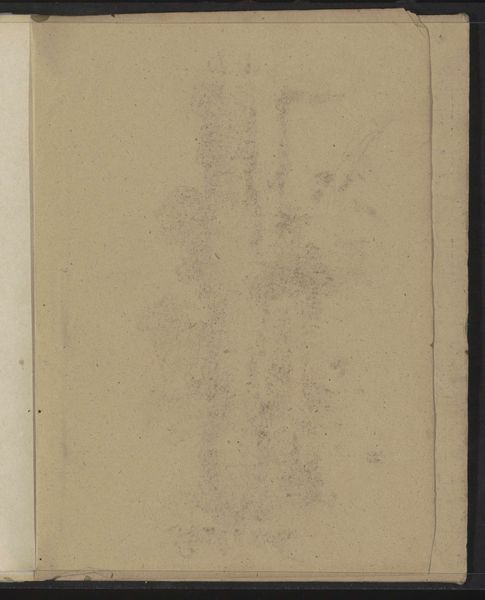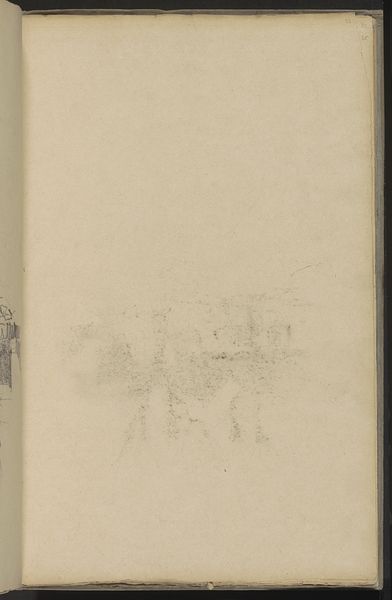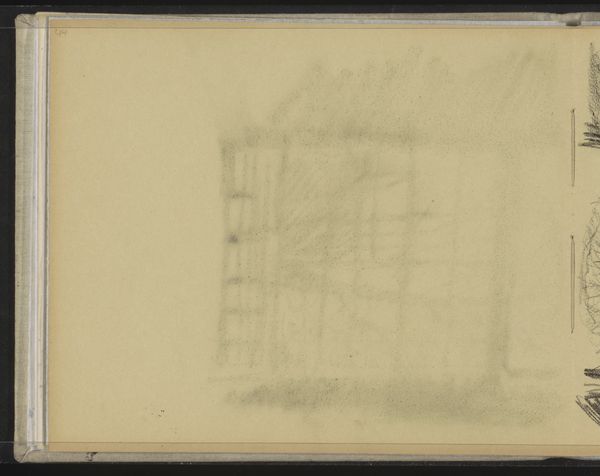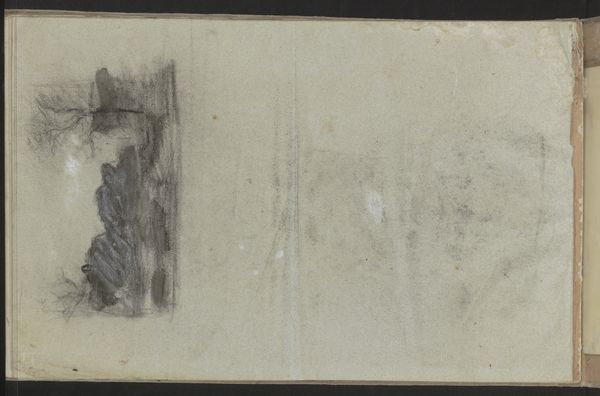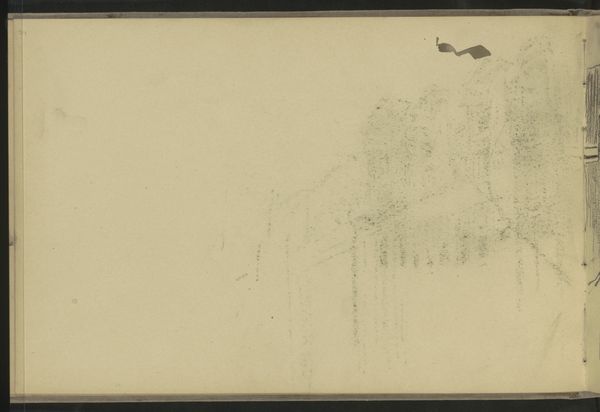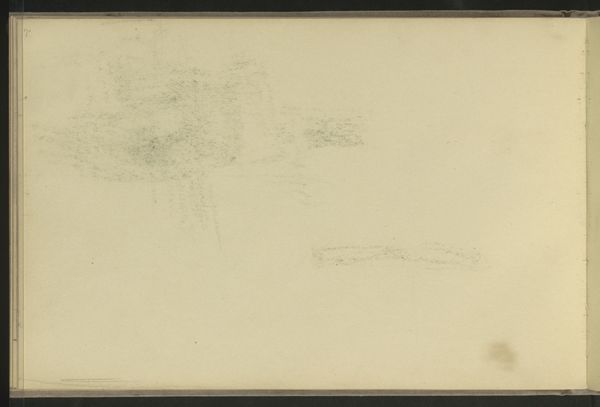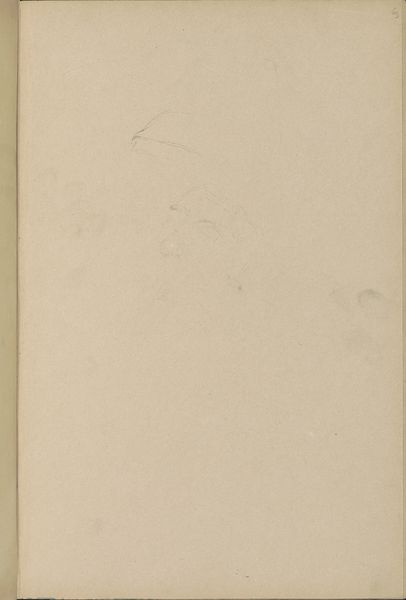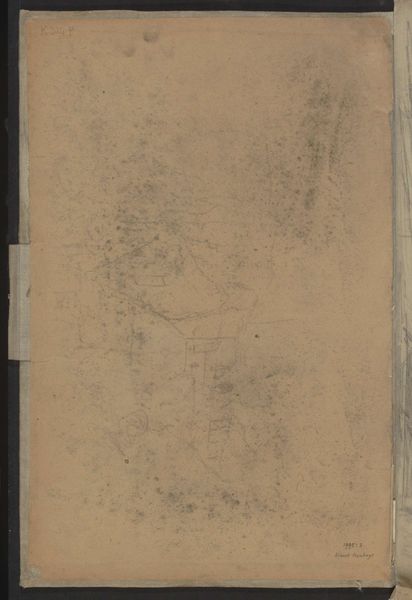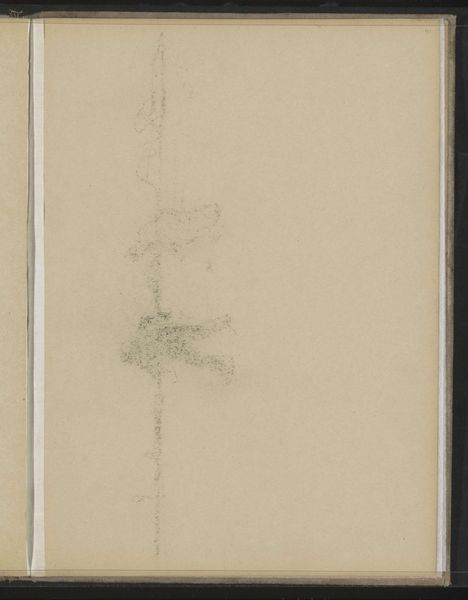
#
aged paper
#
toned paper
#
ink paper printed
#
sketch book
#
hand drawn type
#
personal sketchbook
#
pen-ink sketch
#
ink colored
#
sketchbook drawing
#
sketchbook art
Copyright: Rijks Museum: Open Domain
Curator: Looking at this work, it’s difficult not to feel a sense of unease. The sketch seems to capture a moment of disturbance, with blurred shapes evoking a spectral presence and unsettling implications about social structures. Editor: It strikes me more as an unfinished product, maybe even a mistake, a page left in a sketchbook. Curator: Actually, that’s part of the story. We’re looking at "Abklatsch," created by Willem Witsen around 1884 to 1887. It’s currently held in the Rijksmuseum, and it seems to be ink on aged paper, a page taken directly from one of his sketchbooks. The term "Abklatsch," meaning 'blot' or 'impression', is the name given to the practice when two sheets are pressed together. It looks like it captures more than the image of a place or a scene, don’t you think? Editor: It does raise questions about its intended purpose. Given it comes from a sketchbook, it could be simply a preparatory sketch, experimenting with perspective. Did Witsen see something in the accidental duplication? The use of ink suggests he did. There's a labor to that choice, and it changes the material context to deliberate mark-making. Curator: Exactly. The sketch-book itself becomes a record of artistic labor and its cultural role; who gets to record these scenes, whose perspectives and practices matter? Moreover, in that moment and that social position, who got to create in the first place? This image echoes broader themes of marginalized perspectives within societal landscapes. It forces me to look beyond Witsen himself, his intentions, or the technique on display, toward a bigger discussion of art and labor within the 19th century. Editor: But is that what’s evident when looking at it? Perhaps its artistic value is the exploration of the medium. I suppose that even this was still a craft involving labour and an artist honing their skill through practice. Curator: A valid point. The artistic skill embedded in the materiality is undeniably relevant and valuable when considering the work and, perhaps the point isn’t solely to examine identity or the intersectional contexts from which art emerges but rather, the intersection between artistic processes, identity and our understanding of labor in art production itself. Editor: Exactly, looking at the process can reveal many different intentions. It encourages multiple avenues for further discussions. Curator: It certainly does, prompting a continued investigation into how we construct, consume, and circulate narratives within our visual culture.
Comments
No comments
Be the first to comment and join the conversation on the ultimate creative platform.
